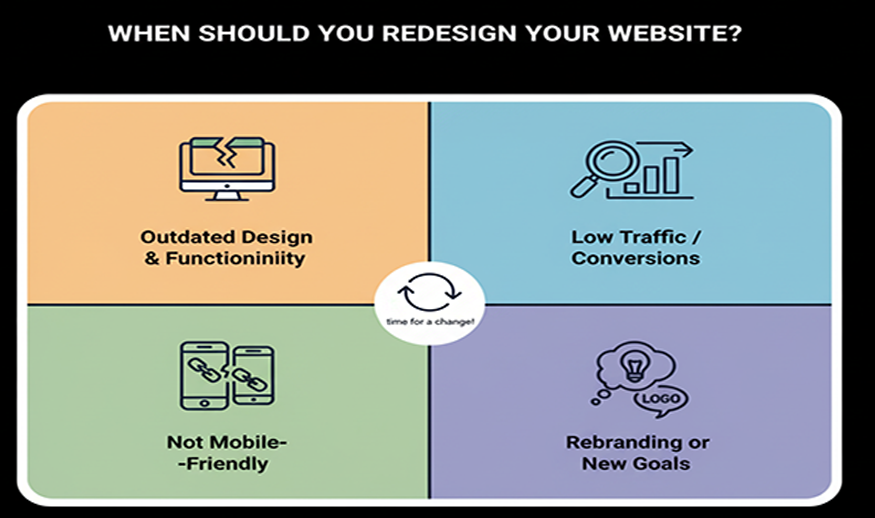
When Should You Redesign Your Website
Performance-based triggers
Your analytics can highlight problems with your website's effectiveness.
- Declining conversion rates: A drop in sales, sign-ups, or inquiries often indicates that visitors are not being guided effectively through the site to take action.
- High bounce rate: A high bounce rate means visitors are leaving your site after viewing only one page. This can signal issues with load times, design, or content.
- Decreasing traffic: Falling traffic, especially from search engines, can mean your website is no longer aligned with current SEO standards, has technical problems, or is losing ground to competitors.
- Slow load times: In a fast-paced digital world, users expect websites to load quickly. Pages that load in over 3 seconds see a higher chance of visitors abandoning the site.
User experience (UX) and design triggers
If your website is frustrating for users, they will not stay long.
- Outdated design: Your website's visual elements, like fonts, color schemes, and layout, look old and amateurish compared to modern standards. This can cause users to lose trust in your brand.
- Not mobile-friendly: With a majority of web traffic on mobile devices, a site that isn't responsive and easy to use on smaller screens will fail to engage a large portion of your audience.
- Difficult navigation: A confusing or cluttered navigation structure makes it hard for users to find the information they need, creating frustration and driving them away.
- Poor user feedback: Regular complaints from customers about their experience on your website, such as finding it hard to use or locate specific information, are a clear sign for a redesign.
Business and technical triggers
Your website should be a strategic tool that reflects your business's current state.
- Rebranding or repositioning: Any significant change to your brand identity, messaging, or services should be reflected on your website to maintain a consistent image.
- Outdated technology: Relying on old technology, unsupported plugins, or a rigid content management system (CMS) can create security risks, slow performance, and make updates difficult.
- Competitors have a better website: If your competitors have more modern, feature-rich, or user-friendly websites, a redesign can be a key strategy to keep your business competitive.
- Difficult integrations: If your website can't easily integrate with modern tools for marketing, sales, or analytics, it may be time for a redesign.
A strategic redesign based on data-driven insights rather than just aesthetics can lead to improved performance and long-term business growth.
